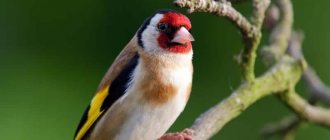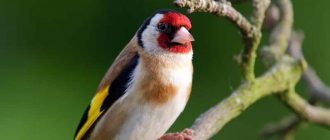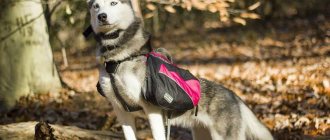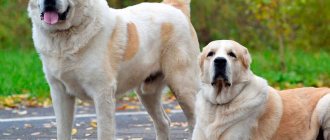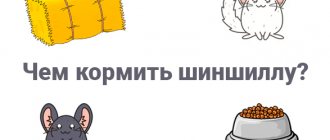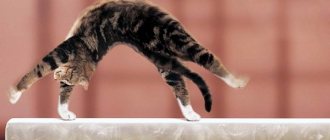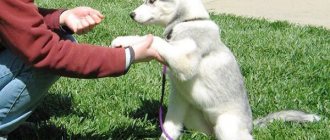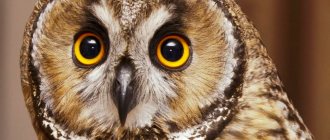Home content
The siskin bird easily gets along in captivity. Along with the canary, this is a typical species for keeping at home. When the right conditions are created, they are even bred in a cage. For almost a whole year, the siskin chirps patteringly. This song is not particularly diverse, but it is not monotonous, in general, it does not get boring. This species has a tendency to imitate the sounds of other birds.
Siskins are known to be restless, so if possible, you should choose a spacious cage for them. They get used to the conditions relatively quickly and, if treated well, calmly fly into the room and return to their own room. It is believed that this is the most tame species of songbirds.
The siskin is not particularly picky about food. He readily eats regular grain mixtures. You can use millet and oatmeal as a basis. It is useful to mix seeds of coniferous trees, birch and alder into it. Additions of fresh apples, herbs and carrots are beneficial. Siskins love plantain and dandelion seeds.
However, it should be remembered that when feeding chicks in their natural habitat, they feed on animal protein. If it is not possible to add insect larvae to the diet, you can enrich the diet with a boiled chicken egg. It is grated and mixed with carrots and breadcrumbs to a crumbly consistency.
In the cage, two walls are made blank, forming an angle. In that place, the ceiling is covered, the space is decorated with pine branches and special platforms are installed. Siskins will build a nest in them. To do this, you need to put suitable building material at the bottom of the cage: grass, moss, feathers, cotton wool trimmings.
Siskins love to swim. To do this, it is advisable to prepare separate dishes in addition to those used for drinking. During nesting, a pair of siskins needs to be provided with peace. If possible, clean up less frequently, and leave food and water against the opposite wall. The likelihood of successful reproduction in this case increases.
Shared keeping with other birds
Chizhi are famous “collectivists”. Their friendly disposition makes them ideal neighbors for related canaries or peaceful goldfinches. Other small birds will also work.
We learned what is needed for successful and long-term keeping of vocal siskins in the house. We hope this data will help our readers make such a singing friend. More joyful notes every day!
Sources:
https://nashiptichki.ru/%D1%87%D0%B8%D0%B6-%D0%B2-%D0%B4%D0%BE%D0%BC%D0%B5-%D1%81%D0% BE%D0%B4%D0%B5%D1%80%D0%B6%D0%B0%D0%BD%D0%B8%D0%B5-%D0%B8-%D0%BA%D0%BE%D1% 80%D0%BC%D0%BB%D0%B5%D0%BD%D0%B8%D0%B5/ https://zooeco.com/0-dom/0-dom-pt-1-24.html https http://pets2.me/bok/94-soderzhanie-chizha-v-domashnih-usloviyah.html
I want a siskin: keeping a bird!
Siskins can be worthy competition not only in terms of beauty. They are more intelligent than overseas pets. Thanks to their well-developed natural memory, having become accustomed to the owner caring for him, they are able to recognize him among the rest of the household. As soon as this person appears in the bird's field of vision, the bird immediately becomes playful and begins to sing.
This may seem surprising, but the Chizhu have a high level of culture and discipline, just like the Amazons. The presence of such qualities does not give cause for concern if they accidentally forgot to close the cage door: the prisoner will not escape anywhere and, moreover, will not leave traces of vital activity in the room anywhere. The siskin will immediately return back to its small home at the command of its owner. The bird easily gets used to this. It is precisely because nature has endowed the siskin with unsurpassed memory and a sharp mind that it can be taught the correct behavior without much effort.
Siskin easily finds a “common language” with other inhabitants of the bird hostel and never gives rise to a quarrel. If any of the novice breeders decides to acquire this beautiful bird, then he should be prepared for the fact that the character of each of the individuals, like a person, has individual characteristics. Of course, everything described above in the previous paragraphs is true for most siskins, but the birds differ slightly from each other in habits, preferences, etc.
Keeping a siskin will not seem difficult for those who intend to acquire this bird. By following a very small amount of recommendations, you can be sure that the siskin will always be in high spirits, as evidenced by cheerful trills.
The neatness of the siskins is pleasantly pleasing. The cage must contain a container filled with water to meet hygienic needs, i.e. water procedures. Clean birds will be able to maintain their unusually bright plumage in excellent condition. Separately, you need to place a container with clean water so that the bird can quench its thirst
It is important to keep the water clean and change the water periodically so as not to create additional preconditions for deterioration of health.
The minimum width and length of the lattice dwelling should be 40 by 40, and the height should be 10 centimeters less. Peacefulness and kindness can harm a siskin if he has to coexist with representatives of birds whose character is far from angelic. This circumstance must be taken into account when organizing a bird “hostel” - the morals of the inhabitants, as well as the sizes, should not differ.
One of the conditions for good absorption of food by a siskin, like any other bird, is the presence of small grains of sand in its crop. Therefore, a feeder should be attached to the wall of the cage, into which purified river sand should be poured. You can also add mineral supplements that are beneficial to the body in the form of eggshells, chalk and charcoal.
You can create conditions as close as possible to the natural habitat by attaching different perches. There should be as many of these accessories as possible. Thus, the interval will be very small; therefore, the siskin will be able to easily jump over rather than fly between the perches. Any owner or housewife can make such simple structures with their own hands, using twigs as material. The perches should not be even so that the siskin does not develop diseases of the limbs (legs) while staying in the cage.
Siskins are on the move most of the time, and being constantly in a cage constrains them. Therefore, it is necessary to open the cage and release the prisoner so that he can enjoy free flights indoors. Leave the door open - the siskin will fly back freely when it sees fit. Otherwise, the bird will get worried, and this will have a positive impact on its health.
Selection and arrangement of the cage
Having found out what kind of bird this siskin is and looking at the photo and description, many will immediately want to take such a handsome bird home.
But the first thing you have to do is prepare the cage. In most cases, these are ordinary structures made of rods, the “foundation” of which is a solid plastic pallet.
Siskins do not need a huge aviary - an “apartment” measuring 40x25 cm and a height of 30 cm is enough for one chick. For a couple, you will have to take a larger cage (about 40x40), but of the same height. If the task is to breed chicks, then you need a cage with dimensions of 70x50 cm and a height of at least 0.5 m.
Important! The optimal time for adoption is considered to be the beginning of spring
- the pet quickly becomes toned and gets used to the place.
There is one more nuance regarding the size: the distance between the rods should be such that other pets (especially cats) cannot reach the bird with their paw.
In terms of materials, everything is simple: a traditional metal cage is combined with a plastic base. The main thing is that the bottom is made in one piece, without cracks or irregularities (they can cause injury).
For the “settings” you will need:
- Feeder. A small-diameter “round piece” purchased at a pet store will do.
- Drinking bowl. The most practical nipple systems are small in volume (30–50 ml).
- Bath. You can’t do without this open container - the bird is very clean. You will have to put up with the small “swamp” that occurs when swimming.
- Little house. This could be a canary nest or a hut made from twigs.
- "Attractions" in the form of perches. They are placed with a small gap so that the siskin jumps from one to another (and does not fly over). Small branches will do for this. The only thing is that their surface should not be smooth. Small bumps will keep your legs toned.
Just before moving in, the back and one of the side walls are covered with cardboard, making them blank.
The top is also covered, but halfway. The house or nest itself is placed in the most secluded corner - siskins love comfort, which reminds them of overgrown treetops. Therefore, you can add a decorative element by scattering a few pine branches. They don’t forget about “building materials” - birds love to tinker with wool, moss, small feathers and dry grass.
Did you know? The familiar species has an American “relative”, which surprises with its bright yellow color contrasting with black feathers. You can buy such beauties, but the price scares off many.
Range and habitats
The siskin is a common bird throughout most of its range. And the area itself is quite large. It stretches across the entire forest zone of Eurasia from Ireland and Scandinavia to Sakhalin and Primorye. In the center of Siberia, the habitat is almost interrupted, despite the fact that there are places suitable for this bird to live here. This intermittency of the range can be explained by too long a winter, as well as by the fact that under these conditions deciduous trees and shrubs play a small role in the composition of plant communities. The typical taiga composition of plant species makes the food supply of the siskin too scarce.
In the south, the habitat of the siskin is replete with fragments of terrain free from the participation of this species in the composition of biocenoses. It nests in isolation in the Caucasus and Transcaucasia. This is due to the species being confined to mountain mixed forests. In the Far East, favorable conditions for siskins exist in Primorye, the Amur region, and Sakhalin, that is, where mixed coniferous-deciduous forests still survive.
Siskin is a migratory bird. However, he does not like to fly far. These movements can rather be called migrations. This bird waits out the winter in the southern Mediterranean, the Middle East, southern Iran, Japan, China, and Kazakhstan. Birds of this species prefer to live and nest permanently in coniferous forests, which often contain areas with deciduous trees.
This is interesting: Common capercaillie - description of the bird, habitat, reproduction
Search for a mate, reproduction
Birds begin to look for a mate in early spring. Since birds do not need small animals as food, they begin to arrange nests immediately after the thaw. It is then that the siskins can find suitable building material on the ground.
The mating season begins, during which the birds look for a suitable place for their future home, the couple equips it and begins to lay eggs. It is the male who is responsible for attracting the female, protecting her during the process of incubating eggs and choosing a suitable place for the nest.
The search for a mate begins with the male's loud singing. This is how siskins inform surrounding birds that this place is already occupied, and attract females to them. As soon as the suitable “lady” appears on the horizon, the partners merge in a beautiful dance, circling each other in the air. The male flies around the female with his tail spread out, never stopping singing for a minute. Of course, such behavior cannot leave the heart of a real woman indifferent.
The male invites the female into his home, and soon she begins to fill the nest with pear-shaped eggs. Their total number in the clutch is 5-6 pieces.
Fact! The diameter of the eggs does not exceed 15 mm.
While the female is incubating her future offspring, the male is responsible for providing her with adequate food. This period lasts up to 15 days. A similar amount of time is needed for small chicks to turn into full-fledged siskins, ready for independent life. Until then, the parents are engaged in feeding them.
In one season, a family of siskins is capable of raising 2 full broods of chicks. The first offspring is released into the wild at the beginning of June, the second at the end of July. In August, the birds begin to actively fatten up and gather in large flocks to soon leave for warmer climes.
Interesting! The size of a flock of siskins can reach several hundred individuals.
Home care
Siskins compare favorably with “exotics” in their unpretentiousness. Caring for them involves simple manipulations:
- regular replacement of water with fresh water (both in the main “cup” and in the bath);
- washing all containers in the cage;
- periodic (once every month) general cleaning, during which the tray is washed, dirty cardboards are changed and the rods are wiped.
Some owners add a little purified river sand to the feeders, which their pets use to clean their beaks before eating.
An active siskin must be released from the cage, keeping it open. Unlike the same parrots, these birds return “to base” without any problems.
Such flights are quite short, so there are no difficulties.
Important! When purchasing a cage, do not be too lazy to feel all the fastenings of the rods. A pet with a fairly powerful beak can easily pick up the slack.
Before releasing the bird, close the windows. If these are the first walks in a new place for her, it is better to cover them with curtains to avoid injuries - when she sees a window, the siskin can fly into the glass at full speed. During this time, it is better to isolate pets and remove sharp objects or at least cover them (curiosity can sometimes lead to trouble).
You should not let your active pet into the kitchen, where he could get hurt. And you will have to close the doors carefully - the chick can sit under them or right on them, so watch carefully.
Siskins are quite thermophilic, and when kept in cold areas with long winters, they may need additional lighting in the form of a regular 75 W lamp, which is turned on for several hours. At the same time, you should not place the cage near batteries or heaters that are working at full speed. The best location would be a window sill.
Key Features
From the outside, it may seem that the birds fly chaotically from tree to tree, but this is not so.
After a little observation of the flock located on one of the trees, you can see how the siskins are talking among themselves.
Quietly chirping, they deftly jump from branch to branch in search of seeds, helping themselves with tenacious claws and beak.
After a signal given by the leader, the flock, with wave-like movements, flies together to another tree.
At the beginning of autumn, siskins gather in flocks, and with the onset of cold weather they go to wander to warmer areas. In winter, yellow-green birds can be seen just walking around the city.
Upbringing
As soon as the adaptation period ends, the owners of siskins begin training with them. After several lessons, you will understand that after cleaning, the cage can be left open, the bird will not fly away, and it will not damage the furniture. You can teach your siskin to finish his walk on command and return home. Thanks to its sharp mind and excellent memory, lessons with a siskin are a pleasure for its owner, because the bird is a capable student. These are the unique abilities nature has awarded these miniature creatures.
Interesting information about siskins
Siskins are birds that are skilled at hiding and camouflaging. Under natural conditions, they camouflage their nests so thoroughly that it becomes simply impossible to find them. This is why it is often said that siskins hide special magic stones in their nests that make them invisible.
In addition to their own singing, siskins are also distinguished by their brilliant talent as a parodist. They can very easily adopt the singing style of other birds if they are close to them. This is another reason why it is not always possible to detect a siskin, because it sings in different voices and in different ways.
Siskins not only quickly become tame birds, they also have the ability to remember the person who cares for them. For this reason, they always rejoice at their owner when he comes and even greet him with their singing.
What does a siskin look like?
Even in the photo it is clear that the siskin does not have such striking plumage as, for example, its relative the goldfinch, but this does not diminish its attractiveness. The size of the siskin is similar to a sparrow - the body length is about 10-12 cm, and the weight is 12-16 grams.
Its color varies depending on the time of year, so in the spring their outfits are especially colorful and which makes it very easy to distinguish a male from a female. The plumage of adult siskins is yellow-green on top, the feathers have longitudinal lines, and the feathers of the long tail are bright yellow. The bird has a cap of black feathers on its head, and small yellow “eyebrows” extend over its eyes. There are two yellow transverse stripes on the dark wings. The black tail feathers have a beautiful yellow-green transition, and they end in a white border.
The plumage of the female siskin is not so colorful, its color is much more restrained, there is no black cap on the head, the back is gray-green, the belly is whitish-yellow with black longitudinal spots. Immature males are similar in color to adult females.
The beak of the siskin is quite unusual - it is thin and short, well pointed, slightly convex at the top.
general characteristics
This songbird can be called a relative of the canary. They are a little similar to sparrows, only siskins are larger and brighter. The body length rarely exceeds 11–12 cm, and the weight is almost unnoticeable - only 13–15 g.
In nature, they are found wherever there are forests. They live on the tops of trees. It is quite difficult to see a siskin’s nest - the “dwellings” made of grass, twigs and moss are usually located at high altitudes (over 10 m). Clutches of 5–6 eggs are hatched there in April (less often at the end of June).
Everyone has heard about how wonderfully the siskin sings. In this matter, he never gets tired - a healthy individual can breed his roulades for 9-10 months a year.
It has been noted that males living alone sing less willingly than birds living in pairs. Indeed, they are more interested in communicating with their “wives” and “colleagues” than in attracting a person’s attention with trills.
Description of the siskin
Siskin is a representative of the passerine order. This bird is small in size. On average it reaches 12 cm in length, weighing from 10 to 18 g.
Appearance
The siskin has a small head with coal-black eyes and a rounded body, two to three times the size of the head itself, a small triangular gray beak and thin brown legs with hooked fingers and short claws to make it convenient to cling to branches.
The plumage color of the siskin is greenish-yellow, mixed with black, dark gray and olive. The female siskin's abdomen is covered with dark stripes or spots.
The male has a more variegated and brighter color than the female, the feathers in the tail and wings, on which stripes of white, black and yellow are visible, are longer, and on the head there is a spot of dark gray or black feathers, the so-called “cap”, and a small black spot or “penny” may appear on the chin.
Lifestyle and behavior
Siskins can appear very restless and even chaotic in their behavior due to their activity. But it is not so. Birds of this species are incredibly united, have a hierarchical system in flocks, and even belong to a species that involves “sharing” food, that is, regurgitating their food to another member of the flock from the dominant group.
Siskins always live in pairs, especially in summer during nesting. The male and female equally take part in the construction of the family nest, preferring to build it on the top of a tree, most often a coniferous one.
They generally try to stay higher off the ground. Closer to autumn, siskins form small flocks, and in winter their migration begins. Usually, if a siskin settles in a warm place, there is no need to change the place.
Therefore, flocks either remain where they settled, or fly short distances, closer to deciduous or mixed forests. And if an ice-free body of water is encountered along the way, the flock will remain there for the winter.
Sometimes it happens that part of one large flock flies over, while the other remains in the same place. Flocks always try to stay together, staying nearby. Up to six pairs with nests can be located on two trees standing nearby.
The sonorous singing of siskins, creating a friendly and romantic atmosphere, can always be clearly recognized. In addition to its natural “style” of singing, the siskin also has the ability to well parody its neighbors - birds of other species, especially tits. It is precisely for their beautiful singing and friendly peaceful nature that siskins are so popular as pets.
How long do siskins live?
From 1955 to 1995, ornithologists banded about 15 thousand individuals in the Leningrad region. Upon repeated captures, it turned out that only two of all those ringed lived to 3.5 years, one to 6 years, and one more lived to 8 years. In 1985, a 25-year-old siskin was recorded, but this, of course, is an exceptional case.
In nature, due to the possible probability of attack or destruction of the nest, as well as constant migration, the average life expectancy of siskins is only 1.5 years, that is, the population is completely renewed within 2 years. When in captivity, a siskin will live much longer, up to 9-10 years.
Video - siskins at the feeder
You and I have learned a lot about the siskin, now let's look at these birds live!
Author of the article: Irina Demina
The poultry farmer needs to firmly grasp the immutable truth: just as we need a bright, clean and comfortable room, the bird needs a clean, bright and cozy cage. Therefore, when constructing a cage, you need to know what kind of bird it is intended for. So, for example, for siskins, goldfinches, tap dancers and tits, which love to climb and jump a lot, cages are needed high, with perches in at least two, and preferably even three tiers. And vice versa, for nightingales, larks, starlings and other birds that like to run on the ground, the cages need to be short and oblong. What can be said about the size of the cages? The popular opinion that the larger the cage, the better the bird feels in it, is completely wrong. On the contrary, in such a cage the bird feels uncomfortable, runs wild for a long time and sings little. But one should not go to the opposite extreme, placing birds in cages that are too small, where they do not live, but suffer. In such a cage, the bird breaks its wing and tail feathers and takes on a tattered, unhappy appearance; the feeder and watering hole are always dirty, sewage sticks to the abdomen, wings, tail and paws, which leads to the rapid proliferation of parasites, which have such a detrimental effect on the birds. Therefore, we need to find that golden mean that would help us arrange a cage in which the bird could live without experiencing unnecessary unnecessary space and without suffering in a cramped, dirty and lice-infested cage. For example, you can take the size of a cage for a siskin: length 38-40 cm, width 23-25 cm and height 34-35 cm. Based on this calculation, you can at least approximately determine the size of cages for other birds, taking into account their size according to compared to the size of the siskin. The shape of cells, as well as their size, are far from indifferent. Many poultry farmers argue that when arranging cages, any architectural intricacy in the form of various balconies, windows, turrets and other pretentious decorations is unacceptable, since all these decorations partially darken the inside of the cage, allow excess dust to accumulate, which leads to general pollution and rapid breeding in such a “very beautiful” parasite cell. Of course, we must completely agree with this, especially since everyone should understand: it is not the cage that decorates the bird, but the bird that decorates the cage. But it is not clear why it is recommended to make only rectangular cells. If we take into account the large number of birds kept in cages, when cages have to be placed one on top of another, then, of course, the presence of rectangular cages will be quite understandable. But if a hobbyist has only 2-3 birds, then why not make their cages with a house or a rounded top? So, without at all denying the rectangular shape of the cells, I still want to consider the shape of the cells
Cells
a house or with a rounded top is quite acceptable. In no case should you have round and multifaceted cages, since in such cages the birds will soon develop visual impairment. The bird begins to suffer from frequent dizziness, which leads to complete exhaustion and death. The distance between the twigs in such cages depends entirely on the size of the birds for which they are intended. So, for example, in cages for siskin, goldfinch, and repolov, the distance between the twigs should be no wider than 1.3-1.5 cm; for starlings, thrushes, bullfinches from 1.8 to 2 cm; for kinglets, warblers and especially the nimble rootstock, no wider than 0.9-1.0 cm. It is better to make the sides (bottom boards) higher from 8 to 10 cm. 50-60 cm, width 25-30 cm and height 30-35 cm. The top of such a cage is not made of wire rods, but is pulled up onto high sides, which is desirable to avoid unnecessary clogging of the room from sand and food thrown out by the bird. Cages for nightingales, thrushes and blackcaps are built low, but oblong. The dimensions of such “nightingale” cells will be approximately as follows: length
I glue it with canvas, or even better with white oilcloth. This is done so that when flying upward the bird does not hurt its head. Such cages are called “span”. The cage for the lark and spinning top can be oblong or square. The top of the lark's cage must be soft, like in a nightingale's cage. The twigs should be made from thicker wire. The distance between them should be from 2 to 2.2 cm for the lark, and from 1.8 to 2 cm for the spinning top. Rare gaps between the twigs are necessary so that the bird can freely insert its head between them, since in a lark’s cage, as and in the spinning top cage, the feeder and watering hole are built not inside the cage, but outside. It is recommended to make the sides of the cage higher, up to 10 cm. High sides are desirable for three reasons: 1) so that the bird litters less, 2) so that it is less frightened and fights, since birds are quite timid.
3) if the lark constantly looks out of the cage through the low sides, then he will become afraid of everything, often fly up and will not sing. If the sides of the cage are high and it is difficult for the bird to get food and water, then in those places on the sides where the feeder and watering hole are hung, recesses should be made, as shown in the figure. How to arrange a convenient feeder for a lark and a spinning top? It is better to make the side boards and the bottom from planks about 1 cm thick and 10-11 cm long. The bottom is best made of plywood. To conveniently hang the feeder from the side of the cage, wire hooks with rounded ends are securely driven into the edges of the side boards. Perches are not needed in a lark cage. The best cages are wooden ones with wire rods. Every cage must have a retractable bottom, preferably a metal one, of course. In order not to put your whole hand into the cage when removing it from cracks, which contribute to the appearance of parasites in the cells. It is not recommended to make drawers for food in cages, as they contribute to excessive contamination of the cage. It is better to give food in glass or clay dishes. There should be no gaps in the cage
A very important part of the cage are the perches. The perch is planed from strong wood so that its upper side is semicircular and the lower side is flat. The thickness of the perch should correspond to the size of the bird's fingers. The thickness of the perch is needed so that the bird can barely wrap its fingers around it. The perches are placed so that, firstly, they stand firmly in place and cannot fall and, secondly, a bird jumping on them cannot pollute the food and water.
Lifestyle and habitat
The wide habitat of siskins makes it possible to observe birds almost everywhere. Different species are found in the European part of the continent, Asia, the British Isles, Brazil, South and North America. Siskin is a migratory bird that tends to appear in areas where warm seasons persist at any time of the year.
Listen to the voice of the siskin
Habitat areas are numerous. Birds prefer mountainous areas and settle in mixed forests. The voice of the siskin can be heard in spruce forests, thickets of grass, and bushes. Closer to autumn, birds migrate, moving short distances along river valleys closer to warmth and food. There is a dispute among ornithologists whether siskins should be considered migratory or nomadic birds. Spring migrations occur from early March to late April, winter migrations - at the end of September and October.
As the weather gets colder, small birds appear in alder thickets and birch groves; city residents see them in parks and squares. If the siskins manage to find a non-freezing reservoir, they can stay nearby for the winter. In warm areas, birds do not change their habitat.
Birds are very active in behavior and may seem restless. The internal structure of siskins is characterized by cohesion; they stay together and are always located nearby. Birds do not live alone. Even during the mating season, they build nests nearby; up to six settled pairs can be observed on neighboring trees.
Male (right) and female American Siskin
Siskins have a kind of sharing of food, when food is “delivered” to other members of the flock by regurgitating food. Birds stay higher from the ground, among the treetops, hiding in the crowns. You can see a siskin jumping on the ground only occasionally.
In captivity, siskins easily take root. They are recognized as the most “tame” in comparison with canaries, goldfinches and other songbirds. The chirping of siskins creates a special atmosphere without getting boring. Birds captivate with their intelligence and gullibility. Sometimes they need to travel around the house to spread their wings and make short flights. They easily return to their abode with the understanding that this is their place.
Fidgets need a spacious cage for an active life. A bathtub for bathing is required, in addition to a drinking bowl. Good conditions contribute to the reproduction of pets. You will need coniferous branches in the corner of the cage, a platform for the nest, and building material in the form of scraps of cotton wool, feathers, grass, and moss. During the nesting period, birds are not disturbed by cleaning, and food is left on the wall opposite the nest. The chances of offspring increase when the conditions are met.
Siskin in flight
The home diet includes grain mixtures, which can be based on millet, rapeseed, oatmeal, and canary seed. The seeds of birch, alder, coniferous trees, as well as dandelion, plantain, and flax are useful for birds. Siskins feast on pieces of apples and carrots and do not refuse garden greens.
Feeding chicks requires special animal supplements. If it is not possible to find insect larvae, then the food is enriched with chicken eggs. The boiled product is grated and mixed with crushed crackers and carrots.
Reproduction in the natural environment
For their nest, birds choose the tallest and densest spruce or pine trees. The place for future children should, according to parents, be no lower than 10 meters from the ground.
Both the female and the male participate equally in the construction of the nest. They carefully intertwine thin twigs, roots, blades of grass, after which they cover the resulting (rather deep) bed with soft down, feathers and wool.
The nest is a building in the form of a hemisphere. Its base is located near the trunk itself, which is covered with lichen for camouflage, matching the nest itself.
The siskin's nest is carefully hidden from prying eyes; it is almost impossible to find it in nature
Egg laying occurs at the end of April or early May. Usually the female lays 5-6 eggs; they are uneven in size and may differ from each other in color.
The size of the siskin egg varies from 14 to 18.5 mm in length. The color of the shell is white with a blue or greenish tint, numerous dots, lines and scribbles are dark burgundy.
Parents carefully look after the chicks
The female incubates the chicks for about 12-14 days. Both parents take care of the children's nutrition, bringing them various insects, caterpillars and larvae.
The babies grow very quickly and already on the 15th day they are ready for their first flight.
In a few weeks, the young generation, having become adults, will make room for the next offspring. After all, siskins typically reproduce twice a year.
Peculiarities
The forest bird siskin builds its nest on the top of a tree. From the ground, a skillfully camouflaged dwelling is very difficult to notice. Egg laying usually ends by the end of May. Only the female incubates them for two weeks. For another 14 days, the chicks remain in the nest, where their parents feed them with insects and their larvae. These are mainly small caterpillars and aphids. Over time, young shoots and buds from trees are added to the diet.
Juveniles begin flying from the end of May. At first, the parents stay close, but already in June they begin their second clutch. By August, broods begin to gather in small flocks. During this period, they wander through the spruce forests, and just then they can be easily seen and heard. By the time migration begins, the number of birds in a flock can number up to several hundred individuals.
What do seagulls eat?
The sea gull's prey primarily includes fish. In addition to it, the seagull feeds on insects, crustaceans, small birds and their eggs, small mammals and waste. Like other species of birds, seagulls search landfills, lawns and fields for anything that can satisfy their hunger. An adult sea gull needs 400 g of food daily.
Interesting materials:
How are grades assigned for the 9th grade certificate in algebra and geometry? How to dry feathers from a pillow? How to remove a nail from a board without damaging the wood? How to remove a capsule from MI Band 3? How to extract a picture from a PDF file? How to remove a light bulb from a lampshade? How to extract a certificate from a digital signature? How to train to be a train driver? How to bring it out from under the root to the degree? How to print from the Internet?
Population and species status
Photo: Siskin on a tree
To date, siskins are not in serious danger. They are a fairly numerous species, consisting of nineteen subspecies. Subspecies of songbirds differ from each other according to many criteria: habitat, behavioral characteristics, feather color, habits
Almost all subspecies have large populations, which is largely due to the good survival rate of animals and their caution. The most famous subspecies include: golden siskin, common, Mexican, pine
The siskin species has been assigned the conservation status of “causing the least concern.” This means that these songbirds do not require the introduction of any additional protection measures. The high population of the siskin species is also due to the fact that these animals began to be bred in large numbers for keeping at home. You can find and purchase this bird in almost any large pet store. Siskins do not require special conditions for keeping; they quickly become tamed and delight their owners with melodious songs.
Despite the overall high population of the siskin species, not everything is so smooth. Some subspecies of these birds are rapidly declining in numbers. This is mainly due to their extraordinary appearance. Especially bright, unusual individuals are caught by people who collect exotic animals. For example, this is what they do with fire siskins.
The siskin is an unusual bird not only because of its bright color, but also because of its unforgettable singing. They fly high above the trees, exchanging melodic trills with each other. These birds have won the hearts of people all over the world, so siskins often become pets. They perfectly adapt to life in a cage, are tamed and become very attached to their owners, giving them warmth and affection.
Tags:
- Passerida
- Passeroidea
- Passeriformes
- Deuterostomes
- Finches
- Bilaterally symmetrical
- Wild birds
- Animals of Africa
- Animals of Belarus
- Animals of Eurasia
- Animals of Transbaikalia
- Animals of Iraq
- Animals of China
- Animals of Crimea
- Animals of the forest
- Animals of Mexico
- Animals starting with the letter H
- Animals of North America
- Animals of the Northwest
- Animals of Siberia
- Animals of the Subtropical Zone of the Northern Hemisphere
- Animals of the Subtropical Zone of the Southern Hemisphere
- Animals of the Subequatorial Belt of the Northern Hemisphere
- Animals of the Subequatorial Belt of the Southern Hemisphere
- Animals USA
- Animals of the Tropical Zone of the Northern Hemisphere
- Animals of the Tropical Zone of the Southern Hemisphere
- Animals of Ukraine
- Animals of the Temperate Zone of the Northern Hemisphere
- Animals of the Temperate Zone of the Southern Hemisphere
- Animals of South America
- Interesting birds
- Beautiful birds
- Forest birds
- Small animals
- Real birds
- New palates
- Song passerines
- Songbirds
- Songbirds of Russia
- Migratory birds
- Migratory birds of Russia
- Migratory birds of the Urals
- Vertebrates
- Birds of Africa
- Birds of Bashkiria
- Birds of Belarus
- Birds of the Belgorod region
- Birds of the Vladimir region
- Birds of the Volgograd region
- Birds of the Voronezh region
- Birds of Kazakhstan
- Birds of the Kaliningrad region
- Birds of the Kaluga region
- Birds of the Kemerovo region
- Birds of the Krasnodar region
- Birds of the Krasnoyarsk Territory
- Birds of Crimea
- Birds of the Leningrad region
- Birds of the forest
- Birds of Moscow
- Birds of the Moscow region
- Birds of the Nizhny Novgorod region
- Birds of the Novosibirsk region
- Birds of the Perm region
- Birds of the Moscow region
- Birds of the Rostov region
- Birds of the Ryazan region
- Birds of North America
- Birds of Siberia
- Birds of Tatarstan
- Birds of the Tver region
- Birds of the Tula region
- Birds of the Urals
- Birds of the Chelyabinsk region
- Birds of the Southern Urals
- Birds of South America
- Birds of the Yaroslavl region
- Chordates
- Ghostostomes
- Quadrupeds
- Goldfinch
- Goldfinches
- Eukaryotes
- Eumetazoans
Description and features
A small bird from the order Passeriformes, belongs to the finch family, a relative of the goldfinch. The round body reaches a length of 12 cm, the weight of the bird is 10-16 g. The size of the siskin is similar to a sparrow. Wingspan - 20 cm. Long tail. Thin paws are equipped with hooked toes. The bird's eyes are jet black. Unusual beak - thin, small, slightly convex, well pointed.
The plumage is discreetly colored, but the siskin does not lose its attractiveness. The back is green-gray with the addition of olive, yellowish, and brown shades. On the head there is a large tar-colored cap, above the eyes there are yellow stripes resembling “eyebrows”. The abdomen is light, decorated with spots and dark stripes. The tail is lemon yellow. Tail feathers with white border.
Males are more colorfully decorated than females. In spring, the birds' clothes are especially variegated and rich in colors. The bright siskin in the photo is a demonstration of the April plumage of an adult bird. Siskins reach striking plumage only at sexual maturity. The color of the females is of dim tones, there is no black cap on the head. Sexual demorphism is reflected especially noticeably during the nesting period. The brownish colored females are not so noticeable when incubating offspring in the nest. Emerald males are visible from afar.
Siskin is a ringing, vociferous bird. Close-knit flocks constantly call to each other with a variety of signals. Siskin singing has its own style of performance, but they are able to easily imitate other birds, especially tits. It is pleasant to listen to siskins in the forest. They create an atmosphere of joy and good mood.
In nature, siskins are very careful, hiding in the high crowns of trees. Many ornithologists have noticed that sometimes the bird allows you to get very close, showing curiosity and friendliness. Maybe that’s why the cute little siskin became the hero of stories and legends, songs and various stories. Siskin populations are numerous and do not cause concern to nature lovers, but some species are still protected.
Description of the hawk
The hawk has rather short wings - up to 35 cm. This is quite understandable: hawks live and hunt in the forest, and there with such wings it is easier to take off and maneuver among the trees. The beak is curved and short. Above the beak the cere is yellow.
The eyes are yellow, orange, red-brown in the puffin, slightly turned forward rather than located on the sides of the head, which provides binocular vision. The hawks’ image quality is very good – its resolution is 8 times greater than that of humans. Hearing is also excellent, but the sense of smell is weak in autumn.
On top, the hawks are colored brown, gray and brown, and the chest is light, with bright stripes. Although there are exceptions.
In Kamchatka there are pure white goshawks. The wings are wide, and not pointed, like those of a falcon. The tail is semicircular or evenly cut. The paws are very powerful and yellow in color.
Lifespan in captivity
You already know about the bird’s rapid adaptation to living in a cage. With proper care, siskins will delight their owners for 10–15 years (which is much longer than the lifespan of their wild “brothers”).
But there is also a nuance here. Many bird lovers believe that simply catching a bird in the forest is enough. This is not entirely true - such individuals can be infected with a viral infection, which will immediately spread to other feathered inhabitants of the apartment. So it is preferable to take a chick from people who breed them.
Nutrition and reproduction
A herbivorous representative of finches, the menu includes rapeseed, flaxseed, millet, and cress (can be bought at a pet store as “canary mixture”). Dandelion seeds, plantain seeds, birch catkins are also added here, but it is advisable to offer sunflower and hemp during training or at a meeting, not more often, otherwise the pet will instantly become fat. They are also unpretentious in terms of food choice: they willingly eat almost any grain mixture and the following crops:
- millet;
- flax;
- poppy;
- rapeseed;
- rapeseed;
- quinoa;
- birch trees
All this is perfect for feeding, as well as adding “green” food in the form of lettuce, dandelions, apples, cabbage and sprouted grains. But they have a special love for the seeds of coniferous plants, as well as for the needles themselves - for example, spruce. Occasionally, they can be fed with ant eggs or boiled and finely chopped chicken eggs, especially during the molting period.
In nature, siskins feed on a variety of seeds from wild herbaceous plants and trees.
A healthy siskin eats 2 small spoons of grain mixture per day. Mineral mixtures are supplied ready-made from a pet store or separately from chalk, coal, shells, and crushed shells. Grated carrots are mixed with crumbled breadcrumbs to prevent sticking and served in the winter, restoring the balance. Soluble vitamins are poured into the drinking bowl with water.
The water always changes as it becomes slimy and dirty, no matter what additives are there, at least once a day. The factor of birds bathing in a drinking bowl is taken into account - this is a necessary process for cleansing feathers and skin
Reproduction
In the wild, pairs form in the spring and nest with nests in spruce paws or at the top of a pine tree. In summer it is very difficult to observe or hear these birds; they get lost in the general hubbub and color diversity of migrating guests. This allows you to raise up to 4 chicks.
In captivity, representatives of this breed are the most frequently breeding of the forest warblers. It is enough to place a couple in a spacious cage and place the nest or objects for its construction inside. The expectation is often justified and the couple studies and settles into the proposed conditions, raising 4-6 chicks at home.
They sing better alone, and are much easier to tame. With decent and proper maintenance, birds delight their owners for up to 20 years, which exceeds their lifespan in the wild. A melodic, simple song will pamper the owner’s ears for a long time and delight him with communication with a trusting and smart pet. They treat their neighbors well, but it is worth considering that when kept alone, siskins sing more often, and only males do this
It is also important to take into account how aggressive other feathered pets are, since in case of rejection on their part, the siskin, due to its gentle disposition, is unlikely to be able to stand up for itself
Among the many pets, songbirds occupy a special place. Although they do not have such a bright and attractive appearance, they, however, are no less popular due to their pleasant voices. In addition, many species of songbirds are not too picky in terms of care. One of the most popular in our country is the siskin bird.
Small individuals with a rather remarkable yellowish-green color, a pleasant voice and, most importantly, a fairly accommodating and good-natured disposition
Taken together, all this is a sufficient reason to attract the attention of lovers of such pets.
Taming and teaching siskins different tricks
Siskins are great at connecting with people. With time and effort, they can be taught interesting tricks.
What factors are important for learning?:
- Sound communication is necessary for birds, because they communicate with this world through chirping and singing.
- Movement - birds move when they want to do something, or experience any emotions, they watch a person and his movements.
- Contact – for the bird to perceive you as its owner, establish close contact with it. Please remember that this method is not suitable for all individuals.
The siskin can be trained quite well at home.
What can you teach her??
- accustom the bird to your hands;
- eat from hand;
- landing on the hand or finger;
- fly to the call of a person;
- return to the cage.
To accustom a siskin to commands, you need to be patient, act consistently, if necessary, return to what you have already learned, and repeat it from the beginning.
What to feed the siskin?
Siskins love the seeds of coniferous trees. Therefore, you need to make sure that you always have this delicacy in stock, and as a thank you for the treat, the bird’s owners will listen to charming songs. The seeds of young cones that bloomed not so long ago are of greatest interest to pets. In winter, an alternative is spruce needles - an excellent source of vitamins. In addition, in winter it is advisable to include finely chopped cabbage leaves and grains that have previously been sprouted in the diet. If you finely chop alder, birch, willow and pine twigs, you will get not only food, but also a means for cleaning the beak and sharpening the claws.
In summer, the issue of feeding a siskin is solved much easier: near the house or in the garden there is almost always a dandelion or lettuce leaves. The bird will not refuse apples, carrots and pumpkin pulp, which must first be cut into pieces as thin as possible so that it is more convenient for the bird to peck them. Pear should not be given under any circumstances - it causes indigestion (diarrhea).
Siskins happily peck ant pupae (eggs from an anthill), small insects and insect larvae. During the molting period, it is useful to feed chicks and adults with chicken eggs, which are hard-boiled, and then finely chopped and dried white bread is added. Eating boiled rice also helps add variety to your diet.
Feed selection
Siskin is unpretentious in choosing food. You just need to provide him with a varied diet, which is the key to a long life and the possibility of offspring in the bird. Your pet's diet includes the following products:
- Specialized food for canaries. The seeds can be mixed with millet, rapeseed and lettuce seeds. The daily amount of poultry feed is 2 teaspoons.
- The seeds of such plants are birch, alder, pine, spruce, quinoa, dandelion, poppy, flax, rapeseed. The bird is accustomed to it in nature.
- Pressed sunflower and hemp seeds. This food should not be overused, because too much fatty food will lead to obesity in the bird.
- Greens (woodlice, dandelions, lettuce in summer, and white cabbage leaves, cereal sprouts, willow and birch twigs in winter.
- Vegetables and fruits - carrots, apples, pumpkin. Before serving, they need to be cut into small pieces, or better yet, grated.
- Boiled eggs and rice should be given during feather changes to keep the new feathers healthy and beautiful.
- Larvae of beetles and other insects are also included in the list of siskin’s favorite foods. If the owner can get this treat, the pet will be very happy.
- Crushed pine nuts are a special treat for siskins.
